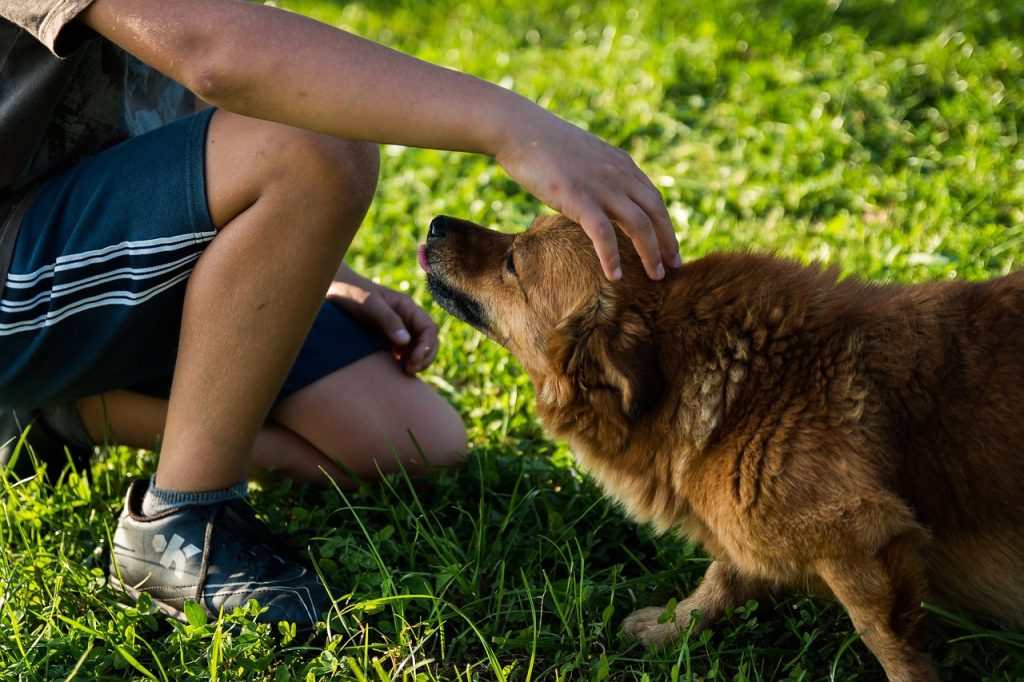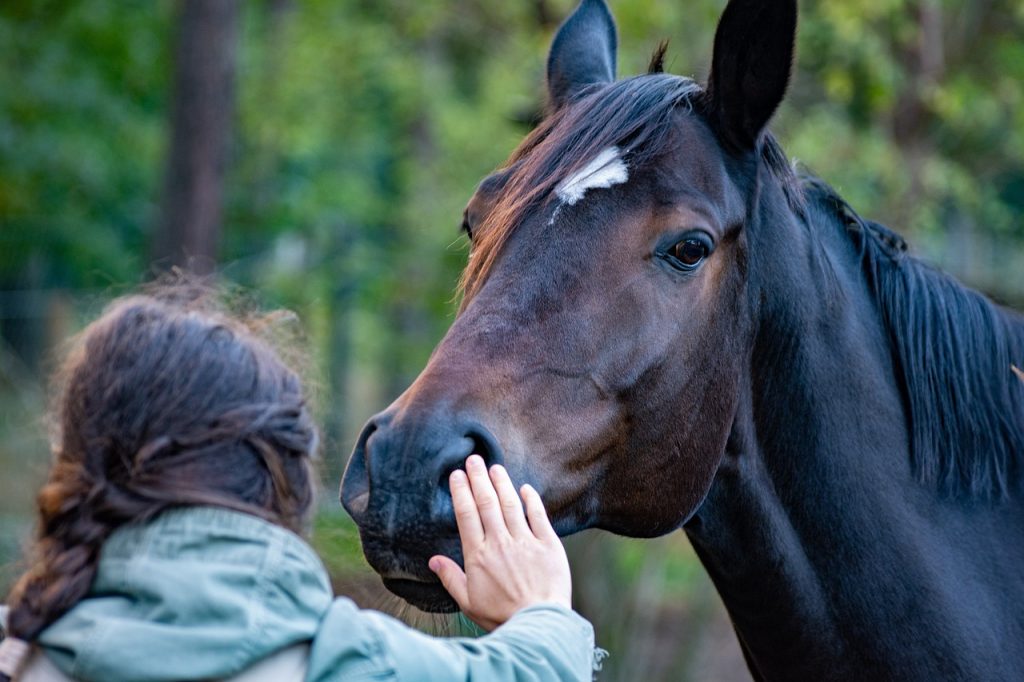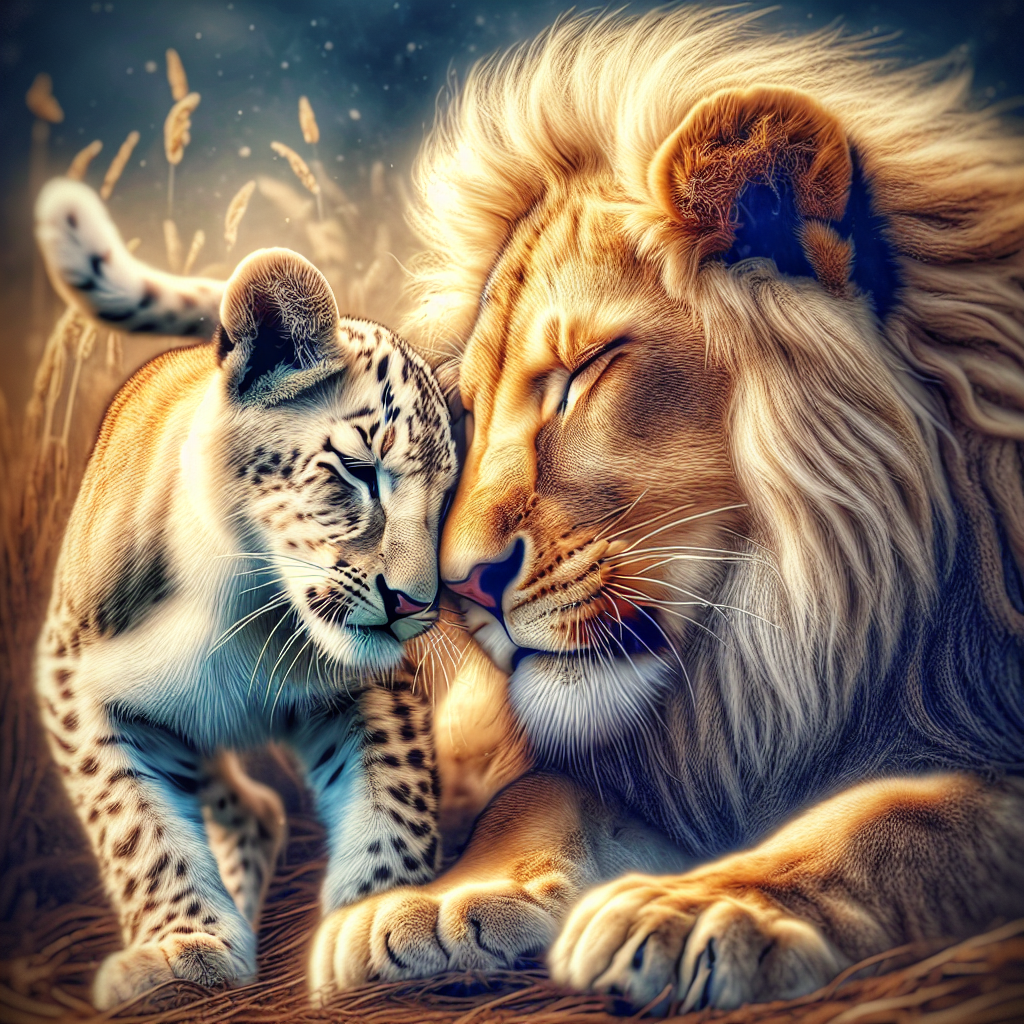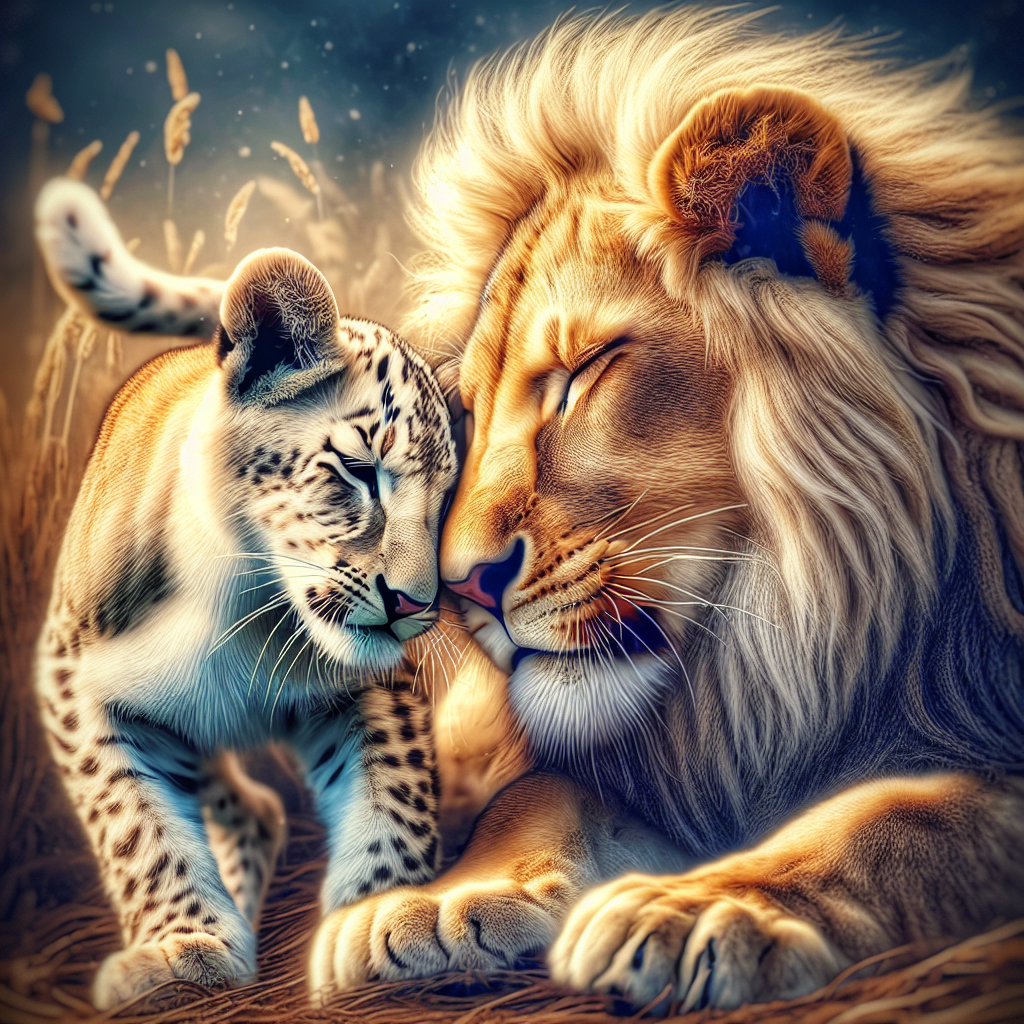So you’re curious about whether lions can be friends with other animals? Well, it’s a fascinating topic to explore. Lions are known as the kings of the animal kingdom, but can they form close bonds with other creatures? In this article, we’ll take a closer look at the intriguing question of whether lions can develop friendships with animals outside their pride. Prepare to be amazed as we uncover surprising connections and delve into the complexity of social interactions in the wild. Get ready to witness the untold stories of unlikely alliances and the blurred boundaries between predator and friend.

Understanding Lion Behavior
Social Structure of Lions
Lions are known for their highly social nature and live in groups called prides. A pride typically consists of multiple related females, their offspring, and a small number of adult males. The social structure of a pride is based on a hierarchical system, with a dominant male, known as the pride leader or alpha male, leading the group. The alpha male is responsible for protecting the pride and its territory, while the females primarily take care of hunting and raising the young.
Hunting Habits of Lions
Lions are skilled predators and rely on cooperative hunting to bring down larger prey. The females in a pride work together to coordinate their movements and strategically surround their target, allowing them to ambush and overpower their prey. While the females are the primary hunters, the male lions often join in the hunt when it involves larger or more challenging prey. Lions have exceptional stamina and can run at high speeds for short distances, using their strength and powerful jaws to quickly bring down their prey.
Reproduction and Family Bonds
Lions have a unique social structure where reproductive females within a pride are commonly related. This family bond plays a crucial role in the survival and well-being of the pride. Lionesses synchronize their reproductive cycles, resulting in multiple females giving birth around the same time. This synchronized breeding pattern allows lionesses to share maternal duties, such as nursing and protecting the cubs, and increases the chances of survival for the young. The male lions also play a role in protecting the cubs from potential threats and intruding males.
Lions and Other Big Cats
Interactions between Different Cat Species
Interactions between lions and other big cat species, such as tigers, leopards, and cheetahs, are generally rare in the wild. These species have distinct habitats and preferred prey choices, which minimize competition and territorial conflicts. However, in captivity, where their natural ranges often overlap, interactions between different big cat species may occur under carefully managed conditions.
Competition for Resources
Competition for resources, such as territory and prey, can occur between lions and other big cat species when their ranges overlap. In cases where suitable resources are limited, conflicts can arise, leading to aggression and territorial disputes. Such competition is more commonly observed between lions and other large carnivores, such as hyenas and leopards, which occupy similar ecological niches.
Conservation Techniques to Promote Coexistence
Conservation organizations and wildlife authorities employ various techniques to promote the coexistence of different big cat species. These include implementing protected areas with well-defined boundaries to minimize conflicts, managing resources to ensure an adequate supply of prey for all species, and conducting research to better understand the ecological dynamics among these carnivores. Additionally, education and awareness programs are crucial in promoting understanding and appreciation for the conservation of all big cat species.
Lions and Domestic Animals
Lions and Livestock Predation Issues
In some areas where lion populations overlap with human settlements and livestock farming, conflicts can arise due to lions preying on domestic animals. Livestock predation by lions can result in economic losses for farmers and, in extreme cases, lead to retaliatory killings of lions. These conflicts pose significant challenges for both conservationists and local communities, requiring effective strategies to mitigate human-lion conflicts and protect livelihoods.
Methods to Prevent Lion Attacks on Livestock
To prevent lion attacks on livestock, various methods have been implemented. These include the use of physical barriers such as sturdy fences, reinforced enclosures, or predator-proof bomas (enclosures) to keep lions away from livestock. Additionally, employing guard animals, such as specially trained dogs or livestock guardian animals like donkeys and llamas, can deter predators. Furthermore, community-based initiatives that promote better livestock management practices and encourage coexistence with wild animals have shown promising results.
Benefits of Livestock Guardian Animals
Livestock guardian animals play a crucial role in mitigating human-lion conflicts and protecting livestock from predation. These guardian animals, through their presence and protective behavior, help deter potential predators, including lions. By reducing the instances of livestock attacks, these animals not only safeguard the economic interests of farmers but also minimize the need for retaliatory killings of lions, contributing to conservation efforts and promoting coexistence between humans and wildlife.
Lions and Herbivores
Prey-Predator Relationship with Herbivores
As apex predators, lions have a significant impact on the population dynamics of herbivores in their ecosystems. Their predation on herbivores helps regulate their populations, ensuring a balance between predator and prey. Lions primarily target large ungulates, such as zebras, wildebeests, and buffalo. By targeting weaker or older individuals, lions help maintain the health and vitality of the herbivore populations, as they selectively remove individuals less likely to contribute to the gene pool.
Impacts of Lion Predation on Herbivore Population
While lion predation can result in the reduction of herbivore populations, it can also have positive effects. By targeting individuals less fit for reproduction, lion predation indirectly contributes to evolutionary pressure, favoring stronger and more resilient individuals within herbivore populations. This, in turn, can lead to healthier and genetically diverse herds. The presence of lions also influences the behavior and distribution of herbivores, potentially benefiting the overall ecosystem dynamics.
Ecological Balance
Lions play a crucial role in maintaining the ecological balance of their habitats. Their predatory behavior influences herbivores’ movements, which can result in changes to vegetation and plant communities. By regulating herbivore populations and preventing overgrazing in specific areas, lions indirectly contribute to the preservation and restoration of ecosystems. This, in turn, benefits a wide range of species, including other wildlife, birds, and vegetation, ultimately promoting biodiversity and overall ecosystem health.

Lions and Scavengers
Lions as Scavengers
Although lions are primarily predators, they do exhibit scavenging behavior on occasion. Lions often scavenge on carcasses of animals that were killed by other predators or succumbed to natural causes. Scavenging provides an additional food source that supplements their hunting efforts and allows them to conserve energy.
Interactions with Other Scavenging Species
Scavenging opportunities created by lions can attract other scavengers, such as hyenas and vultures, to the same carcass. These interactions can sometimes lead to conflicts, particularly if the scavengers compete for limited resources or if the scavenging animal is not willing to share the meal. Despite occasional disputes, such interactions also contribute to the ecological balance by ensuring efficient utilization of resources and preventing the wastage of valuable food sources.
Competition for Carcasses
Competition for carcasses among scavenging species can be intense, particularly when resources are scarce. Lions, with their strength and dominance, often have priority access to fresh kills and can defend their carcasses against smaller scavengers. However, in certain circumstances, when multiple predators converge on a carcass simultaneously, intense competition and occasional confrontations may arise. These interactions provide fascinating insights into the complex dynamics of scavenging communities and the ecological niches they occupy.
Lions and Birds
Lions and Birds’ Nest Predation
Lions are not known for directly targeting birds or their nests as a significant food source. However, there have been occasional records of lions climbing trees to access bird nests, particularly during periods of food scarcity. Such behavior is relatively rare and mainly observed when the nests are within the lions’ reach and offer a potential meal.
Interactions in the African Savanna
Birds often engage in mutualistic relationships with lions by taking advantage of the disturbances they create. Lions’ movements and hunting activities stir up insects, rodents, and other small prey, which attract birds looking for an easy meal. Certain bird species, like cattle egrets, are commonly observed foraging near lions, picking off any insects or small animals that are disturbed as the lions move through the grass.
Mutually Beneficial Relationships
The interactions between lions and birds demonstrate the interconnectedness of different species in ecosystems. While lions may not actively form friendships with birds, their presence plays a role in providing opportunities for birds to access food sources more easily. The birds, in turn, assist in controlling insect populations and benefit from the disturbances created during lion activities. These mutually beneficial relationships exemplify the intricate web of interactions that contribute to the functioning of ecosystems.

Lions and Aquatic Animals
Rare Interactions with Aquatic Species
Lions are primarily terrestrial animals and are not commonly associated with aquatic environments. However, there have been rare instances of lions interacting with aquatic species, such as crocodiles and hippos, in areas where their territories overlap. These interactions are more likely to occur on the fringes of water bodies, where both lions and aquatic animals coexist.
Hunting Techniques near Water Bodies
When hunting near water bodies, lions utilize different strategies to catch aquatic prey. Lions may silently approach the water’s edge and wait for an unsuspecting prey animal, such as a drinking or bathing herbivore, to come within range before launching their attack. They may also use their agility and speed to chase down prey that attempts to escape by entering the water. These hunting techniques near water bodies demonstrate the adaptability of lions in utilizing diverse environments and resources.
Instances of Hunting Aquatic Prey
Lions have been known to opportunistically prey on aquatic animals when the opportunity presents itself. In some regions, lions have been observed hunting species like the Nile crocodile and young hippos, although these instances are relatively rare. Such prey items provide a substantial food source for the lions, allowing them to supplement their diet with aquatic resources when available.
Lions and Primates
Limited Interactions in the Wild
Interactions between lions and primates are generally limited in the wild. Lions primarily inhabit grassland and savanna habitats, whereas primates, such as monkeys and apes, are generally found in forested areas. The distinct ecological requirements and habitat preferences of these two groups reduce the likelihood of direct interactions between lions and primates.
Primates as Potential Prey
While lions do not typically prey on primates, some larger primate species, such as baboons, have been known to exhibit defensive behavior towards lions. Baboons, in particular, are highly territorial and may form groups to confront or intimidate lions threatening their troops. Such interactions highlight the complex dynamics between predators and potential primate prey, serving as fascinating examples of animal behavior in the wild.
Conservation Efforts for Primates
Conservation efforts aimed at protecting primates often focus on preserving their forest habitats and minimizing human-induced threats. While lions and primates do not interact frequently, the conservation of lion populations indirectly contributes to the preservation of the ecosystems that primates rely on. Safeguarding healthy predator populations helps maintain the balance between predator and prey, which indirectly benefits various primate species by preserving a functional and intact ecosystem.

Lions and Reptiles
Occasional Interactions with Reptiles
Lions’ interactions with reptiles, such as snakes and lizards, are infrequent and primarily occur by chance rather than as a significant food source. Reptiles typically do not form a substantial part of a lion’s diet, as their distribution and behavior often differ from preferred prey species.
Prey Preferences of Lions
Lions primarily target larger herbivores and rarely focus on smaller reptiles as a primary food source. The hunting tactics employed by lions, such as ambush and pursuit, are more suited for capturing and subduing larger, more agile prey rather than smaller, elusive reptiles.
Impacts on Reptile Populations
Given that reptiles are not a major focus of lion predation, their interactions have minimal direct impacts on reptile populations. However, the overall ecological balance resulting from lion predation on herbivores indirectly affects reptiles by helping maintain healthy prey populations, which contribute to a stable food web and ecosystem dynamics.
Conclusion
Lions, as apex predators, influence the dynamics of their ecosystems in various ways. Their social structure, hunting habits, and interactions with other animals contribute to a complex and interconnected web of relationships. While conflicts and competition may arise in specific situations, the overall balance and coexistence between lions and other animals are crucial for the health and sustainability of ecosystems. Understanding lion behavior and its impact on different species allows us to develop effective conservation strategies that promote the preservation of these magnificent creatures and their ecological roles.


